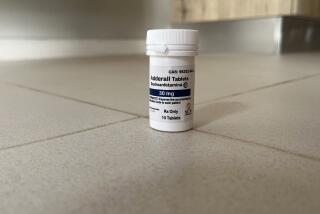How to Detect Counterfeit Money
- Share via
Currency is made by the government’s master craftsmen, who use engraved plates and printing equipment designed for that purpose. Most counterfeiters use a photomechanical or “offset” method to make a printing plate from a photograph of a genuine note. You can help guard against taking counterfeit notes by becoming more familiar with United States money. Look at the currency you receive. Compare a suspect note with a genuine note of the same denomination and series, paying attention to the quality of printing and paper characteristics. Look for differences, not similarities.
* Portrait. The genuine portrait appears lifelike and stands out distinctly from the fine, screen-like background. The counterfeit portrait is usually lifeless and flat. Details merge into the background, which is often too dark.
* Federal Reserve and Treasury seals. On a genuine bill, the saw-toothed points of the Federal Reserve and Treasury seals are distinct and sharp. The counterfeit seals may have uneven, blunt or broken saw-toothed points.
* Serial numbers. Genuine serial numbers have a distinctive style and are evenly spaced. They are printed in the same ink color as the Treasury seal. On a counterfeit, the serial numbers may differ in color or shade of ink from the Treasury seal. The numbers may not be uniformly spaced or aligned.
* Border. The fine lines in the border of a genuine bill are clear and unbroken. On the counterfeit, the lines in the outer margin and scrollwork may be blurred and indistinct.
* Paper. Genuine paper contains no watermarks. It has tiny red and blue fibers embedded throughout. Often, counterfeiters try to simulate these fibers by printing tiny red and blue lines on their paper. Close inspection reveals, however, that on the counterfeit note the lines are printed on the surface, not embedded in the paper. It is illegal to reproduce the distinctive paper used in the manufacturing of United States currency.
Some people believe that a bill must be counterfeit if the ink rubs off. This is not true. Genuine currency, when rubbed on paper, can leave ink smears.
* Raised Notes. Currency is sometimes altered in an attempt to increase its face value. One common method is to glue numerals from high-denomination bills to the corners of a note of lower denomination. These bills are also considered counterfeit, and those who produce them are subject to fines up to $1,000, or imprisonment up to five years, or both.
* Counterfeit coins. Genuine coins are struck (stamped out) by special machinery. Most counterfeit coins are made by pouring liquid metal into molds or dies. This procedure often leaves die marks, such as cracks or pimples, of metal on the counterfeit coin.
Source: Treasury Department
More to Read
Sign up for Essential California
The most important California stories and recommendations in your inbox every morning.
You may occasionally receive promotional content from the Los Angeles Times.










